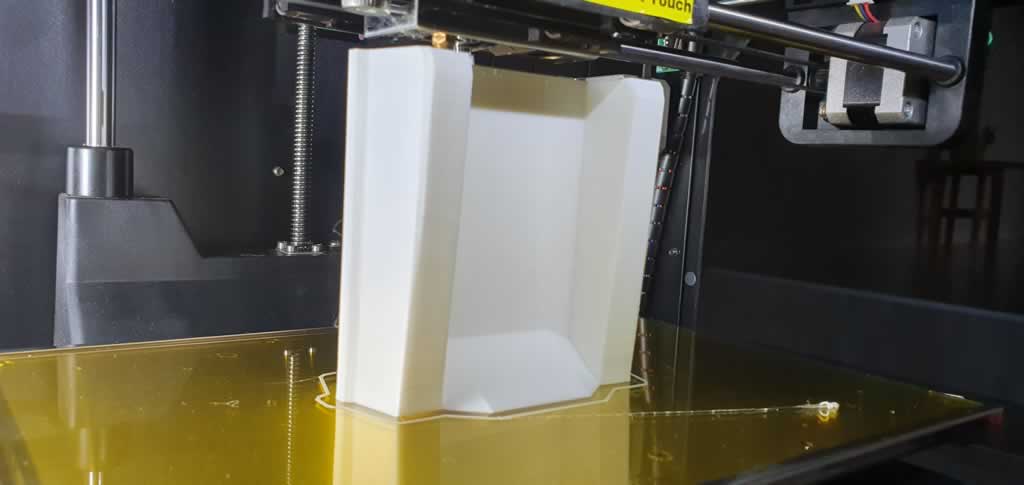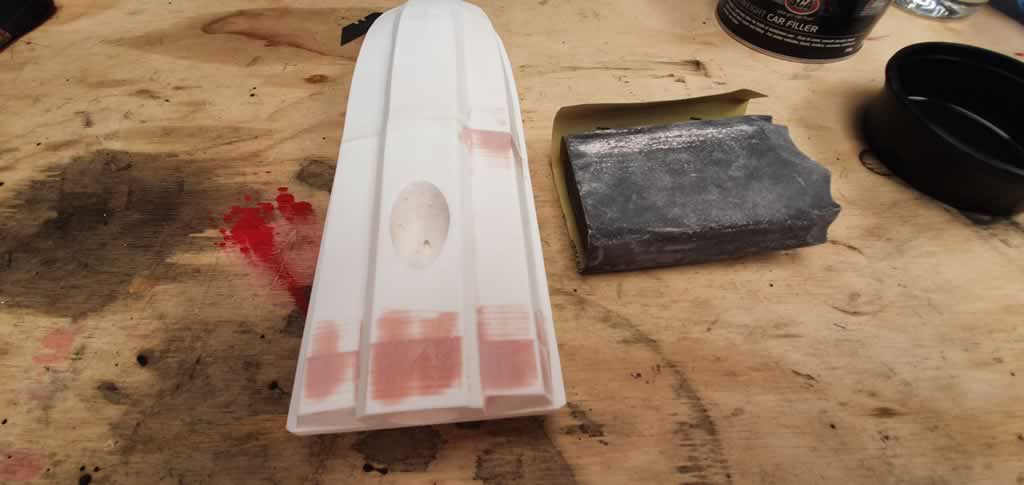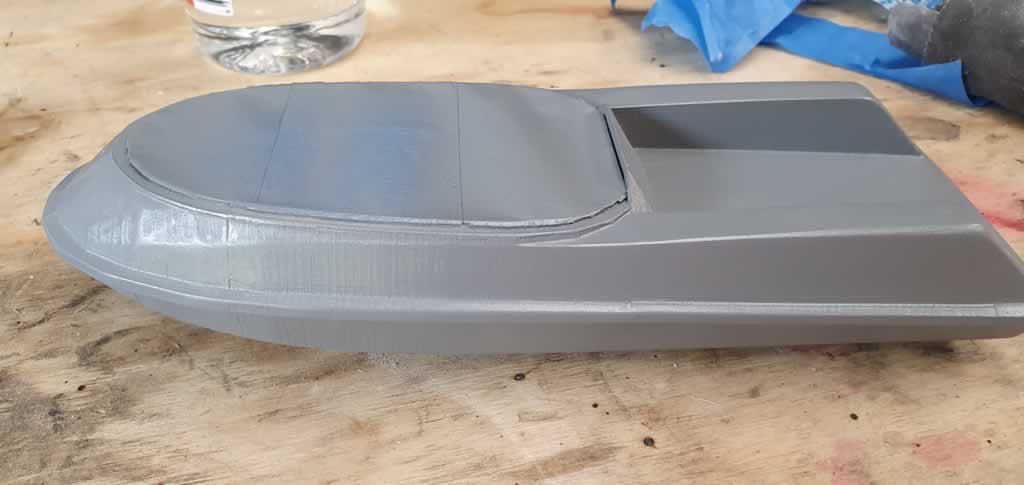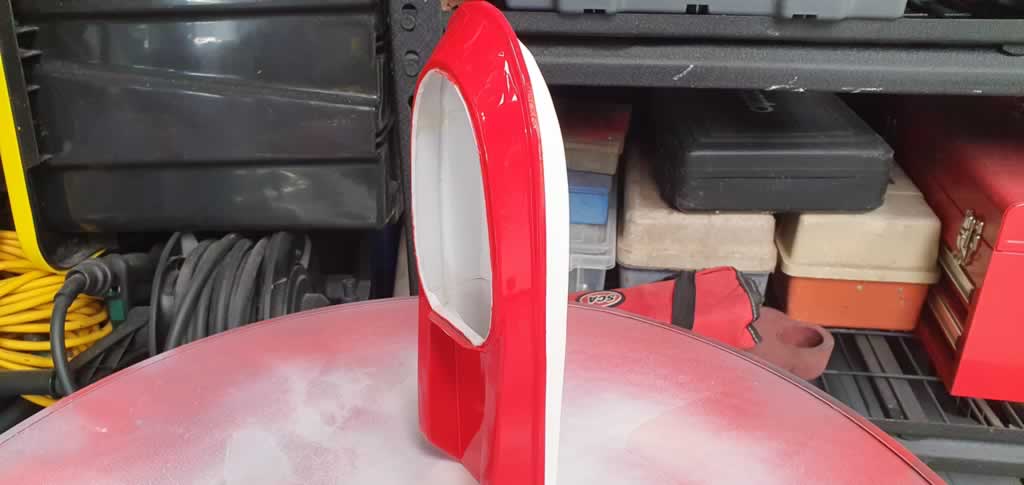Start with a Good Model

Since your final prints are hardly ever showroom-ready, you sometimes need to rely on a little post-processing to take a model the final mile.
In this guide, we cover the basics of painting PLA and ABS 3D prints, from smoothing to the actual painting process, while providing some helpful tips in between. Here, we opt for spray painting over the use of a brush or airbrush because it’s less laborious and fairly affordable, as is explained later.
 Which Paint to Use
Which Paint to Use
Paints can fall into various categories based on their solvent. The most common ones are oils, enamels, lacquers, and acrylics, most of which will work well with both ABS and PLA. As a newbie, you’d be wise to stick to acrylic paints since they dry fast and can be cleaned with water.
Usually, you have to decide whether you’re going to use an airbrush, a brush, or canned spray paint. While a brush is cheaper compared to the other options, it can be tough to accomplish an even coat of paint, with noticeable “blobs” in some spots and the underlying color appearing in others. An airbrush, on the other hand, is costly and typically has a steep learning curve.
This leaves us with spray paints, which strike a clean balance between affordability and ease of use.
Smoothing
 Pre-sanding
Pre-sanding
This is considered the first stage, and it involves trimming rough print features, such as support stubs, before sanding.
You can use some of the following in this stage:
- Craft knife (Exacto knife)
- Sandpaper
- Tweezers
- Toothbrush
- Pliers
The key is to eliminate any protrusions and make sure the print is clean. You can peel off supports with your bare hands, or you can use a knife. It doesn’t matter, as long as the final result doesn’t have bumps or protrusions.
Sanding
Begin with 120-grit sandpaper and work your way up. Use circular motions to avoid visible scratches, and pay more attention to the sides while avoiding the edges, corners, and any other fine details. After all, 120 grit can be too strong for small details.
Sanding smoothens deformities and can be time-consuming depending on the size of the print or finish you are aiming for. Sand down the support marks and make sure you’ve removed any filing or tooling marks.
Progress through the grits depending on your print, but once you’re finished with 200 grit, start using water. This prevents clogging and gives a finer finish.
While sanding, feel the surface of the print at intervals to get an idea of how smooth it is. Once the smoothness is to your liking, use a brush and water to wash away any trapped dust. Naturally, you’ll want to let the print dry before moving on to the next steps.
Check out our beginners’ guide to smoothing PLA if you need more gritty details on this process.
Priming

Priming turns your 3D print into a professional product and makes the painting process effortless by creating a flawless final surface. Priming is necessary because paints will never hide all the flaws, especially when you‘re aiming for a near-perfect object.
Go for a primer that is compatible with your plastic. We prefer using a spray-on primer because it can quickly cover the entire surface with an even coating. This is different from brush-on primers, which are better for fine touch-ups.
Application Steps
Mix the primer: The goal is to dissolve the pigment into the solvent by swirling the spray primer in a circular motion for a few minutes. Swirl until you hear the mixing ball (sometimes called “pea”) rolling inside the can.
TPI: Avoid shaking as it can cause bubbles to form when the coat is sprayed.
Spray the first coat: Hold the spray roughly 10-12 inches from the part and spray in short, rapid strokes. Rotate the part as you spray. You want to mount your model onto a makeshift support to facilitate the spraying process. Also, don’t let the spray pool on the part.
Inspect the first coat: Check if any areas need extra sanding or filing. If sanding is required, you will have to clean off the dust again before respraying. You may have to alternate between sanding and spraying with primer until you get a smooth surface.
If needed, use spot putty to rebuild blemishes. You can apply it using a scraper. Spread it across the surface of the part to fill the gaps, but be careful not to lose detail. Once your print is well-covered, wait about 15 minutes until it has cured, then begin sanding.
Spray the final coat: Add another layer using rapid strokes and keep it light. Avoid adding a thick coat as it will fill the fine details. The best technique is to always sweep across the part with quick and rapid bursts. This method prevents paint from building up and dripping.
Allow your primer to dry before adding extra layers. Usually, two layers are sufficient for a clean surface finish.
The first two coats should be very light since we’re only using it to improve adhesion for the successive layers. But since a primer is enough to improve the surface finish and the aesthetic of the printed part, some people choose to use a primer without even doing any additional painting.
After your final primer coat is added, your part is now ready for painting.
Painting

At this point, you should have a mental image of the finish you’re trying to achieve. The painting process is quite similar to priming.
You’ll need:
Painter’s tape: This sticks firmly to surfaces yet comes off cleanly. This tape will be used to mask some areas of the printed parts to prevent the paint from seeping underneath. Use a hard object, like a credit card, to force the tape into the creases of your model.
Spray Paint: Tamiya spray paints are highly recommended because they come in a variety of colors and finishes, and they go well with plastic.
Application Steps
Apply the first coats: Hold the nozzle near the rotating model and move quickly. You can start with two light coats and finish with three or four wet passes, waiting 5-10 minutes in between to avoid sagging. If you want to continue refining the surface, you may buff and polish the paint surface to maintain a smooth surface that will look glossy under the clear coat, but this is optional.
Add topcoats: Mask the relevant areas to preserve details and add the topcoats. Think of topcoats as layers over the previous coats. The first and second coats will show more if the topcoat is thinner, but in between applications, let the paint sit for a couple of minutes and observe if the color is saturated enough.
(Optional) Finish with a clear coat: This is meant to “seal” the painted model, protecting the paint surface and achieving the desired sheen. Apply the clear coat in one or two thin and even layers, witing for about 10 minutes between applications. At this point, your painting is done, but you can still polish it further with wax or a fine polishing compound if you want a super glossy finish.
Let the paint dry overnight and clean the part the next day using a tack cloth.
Some things to keep in mind:
Masking: Remove the tape right after masking to make sure you have clean, sharp edges between colors. Don’t worry about coating the mask as the tape is supposed to prevent any paint from seeping through.
First coat: A first coat blocks the neutral color of your primer and is recommended when you want rich color. Generally, white is an ideal first coat for light colors, while black is perfect for darker tones.
Topcoats: Topcoats are optional, and when you apply a contrasting color, you will be able to create gradients of rich color blends. But if you want the first and second coats to show, go easy on the topcoat.
Layering: Most intricate parts are painted in several layers, starting with the first coat, which acts as the foundation for the painted model. Note that there are a couple of tweaks you can make if you want to highlight details, create reflections, or get a weathered appearance.
Important Spray-Painting Tips
Below are some general pieces of advice to enhance the above steps:
Painting should be done in a controlled environment with no wind or drafts. Remember that even the slightest movement of air can change the direction of the paint particles.
Complete spray painting in a single session if you want the paint to spread evenly.
Any items in the spraying zone proximity need to be covered, as tiny specks of the paint can get on them. Alternatively, you can spray while holding the piece inside a cardboard enclosure. This helps to protect the surroundings from paint, and the painted item will be sheltered from dust while it dries.
Don’t spray too close to your print or you’ll end up with noticeable drips.
Multiple coats are better than one coat, but keep each coat light.
A trick is to mount your model on a dowel by using an existing hole in the part. This makes it easier to maneuver while spraying and will enable you to access all the nooks and crannies without leaving fingerprints.
Figure out where your painted part is going to stand since it needs some time to dry. Moving the model while it’s drying is not a good idea.
Spray paints are hazardous. They are toxic and flammable, and they can be harmful when inhaled. Therefore, it’s best to wear appropriate clothing, rubber gloves, and a respirator to be safe.
Painting shouldn’t just be an afterthought – think about it as early as the design stage. It’s best to experiment to find what works best for you since there are so many different effects you can achieve.
Happy painting!
Source:
https://all3dp.com/2/beginner-s-guide-to-painting-3d-prints-pla-abs/